Key Points:
- The longest tunnel in Michigan is the Michigan Central Railway Tunnel, which is 1.6 miles long and connecting Detroit in Michigan with Windsor in Ontario, Canada.
- Construction of the tunnel began in October 1906 and it opened in July 1910. It was primarily built for passenger cars, but freight trains also had a passageway.
- The Michigan Central Railway Tunnel is longer than the Detroit-Windsor Tunnel, which is almost 1 mile long and the only underwater passageway for cars that crosses an international border each way.
Tunnels are built for a variety of reasons — sometimes they are built for water, sometimes for mining ores, and sometimes to facilitate transportation. Tunnels may be built for subway systems and trains, or they may be built to accommodate passenger vehicles. In the case of the longest tunnel in Michigan, the intent was not only to allow freight and passenger cars through but also to connect the United States and Canada. Learn about the longest tunnel in Michigan and the subsequent tunnel widely used that was built for a similar purpose.
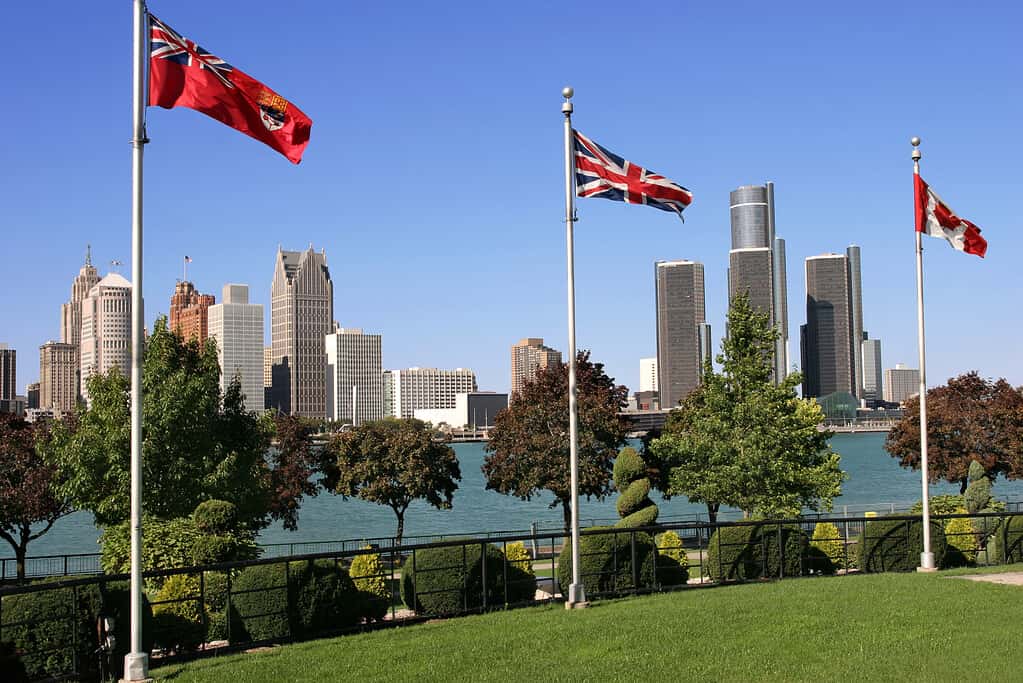
The intent of the longest tunnel in Michigan was to connect the United States and Canada.
©iStock.com/vladacanon
When Was the Michigan Central Railway Tunnel Built?
The longest tunnel in Michigan is the Michigan Central Railway Tunnel, which is 1.6 miles long and connects Detroit in Michigan with Windsor in Ontario. Construction of the Michigan Central Railway Tunnel began in October 1906, but it didn’t open until July 26, 1910. Although the construction of the Michigan Central Railway Tunnel was successful, there were several attempts to connect the United States to Canada that had failed up until that point.
In 1871, there was interest in creating a means of transportation across the river and workers broke ground, but soon after a pocket of gas ended the efforts when workers fell ill. In 1878, there was another attempt. Although gas wasn’t a barrier this time around, limestone formations were. The workers were unable to continue and so abandoned that project as well.
Next was the Grand Trunk Railway Tunnel, which opened in 1891. At the time, it was the longest subaqueous tunnel ever built in the whole world. It was a total of 6,000 feet long. Then, in 1906, the Michigan Central Railway Tunnel became more than a vision. It took four years but eventually, it was completed. Nevertheless, with the growth of the auto industry, there was still a frustration for the automobile transport facilities.
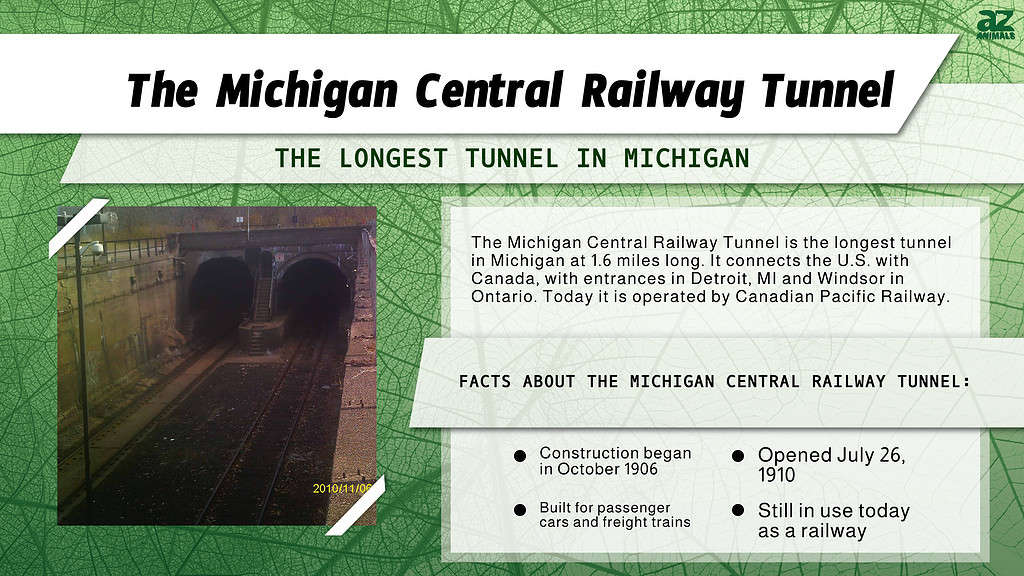
The Detroit-Windsor Tunnel in Michigan
In 1928, construction for another popular tunnel, the Detroit-Windsor Tunnel, began — on both the U.S. and Canadian sides. Today, it’s the only tunnel of its kind, serving as an underwater passageway for cars that crosses an international border each way. It is almost a whole mile long and sits below the Detroit River — 75 feet deep to be exact. When you travel through, your surroundings are comprised of 750 tons of reinforced steel, 80,000 cubic yards of concrete, and a total of 574 lights to get you safely to the other side. You can also breathe easy all the way through because this tunnel has one of the most sophisticated ventilation systems ever created.
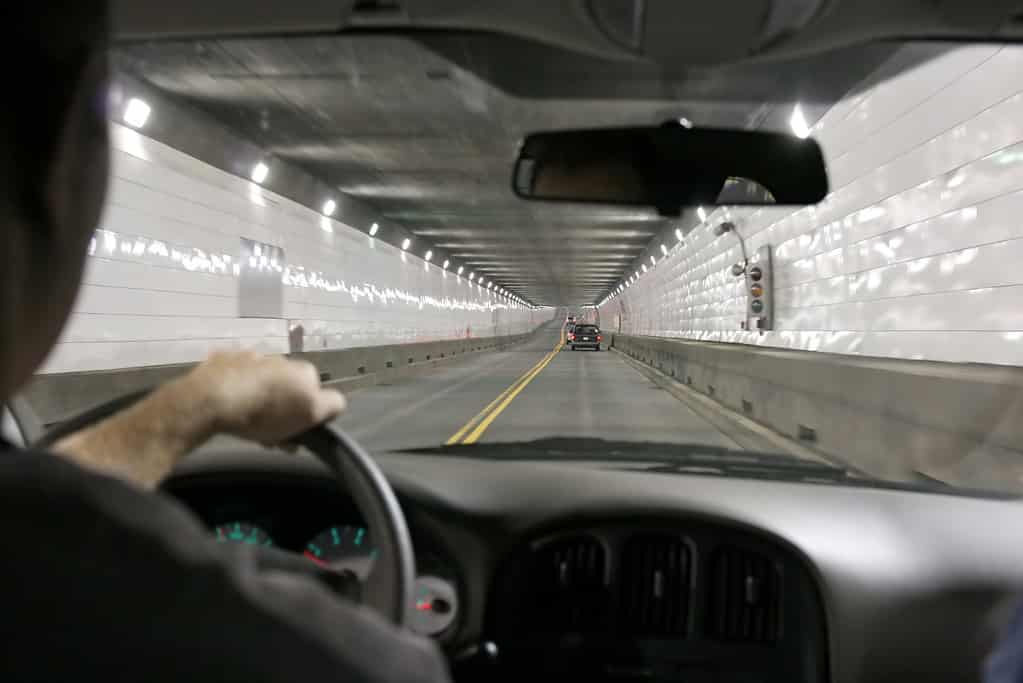
The Michigan Central Railway Tunnel is longer than the Detroit-Windsor Tunnel, which is almost 1 mile long.
©iStock.com/vladacanon
The Michigan Central Railway Tunnel’s Primary Purpose
With over an $8 million dollar investment, the Michigan Central Railway tunnel was built so that it could carry traffic between Detroit and Windsor. It was primarily built for passenger cars, but freight trains also had a passageway. When this tunnel opened, it made it a lot easier to transport both rail cars and goods from each city. Although the Detroit-Windsor Tunnel is the more popular of the two, the Michigan Central Railway Tunnel has it beat as the longest tunnel in Michigan.
If you’re claustrophobic, just the thought of a 1.6-mile-long underwater (and under land) tunnel could get you hyperventilating. At the time of its construction, it was a modern marvel. It even took local train car ferries out of business as they simply weren’t required anymore. Cars could travel to and from Windsor on their own. Although the Detroit-Windsor tunnel was built about two decades later, traffic continued through Michigan’s longest tunnel. Today, it’s still active and operated by Canadian Pacific Railway. Although there were conversion plans, they didn’t see fruition, so it retains much of its historic charm.
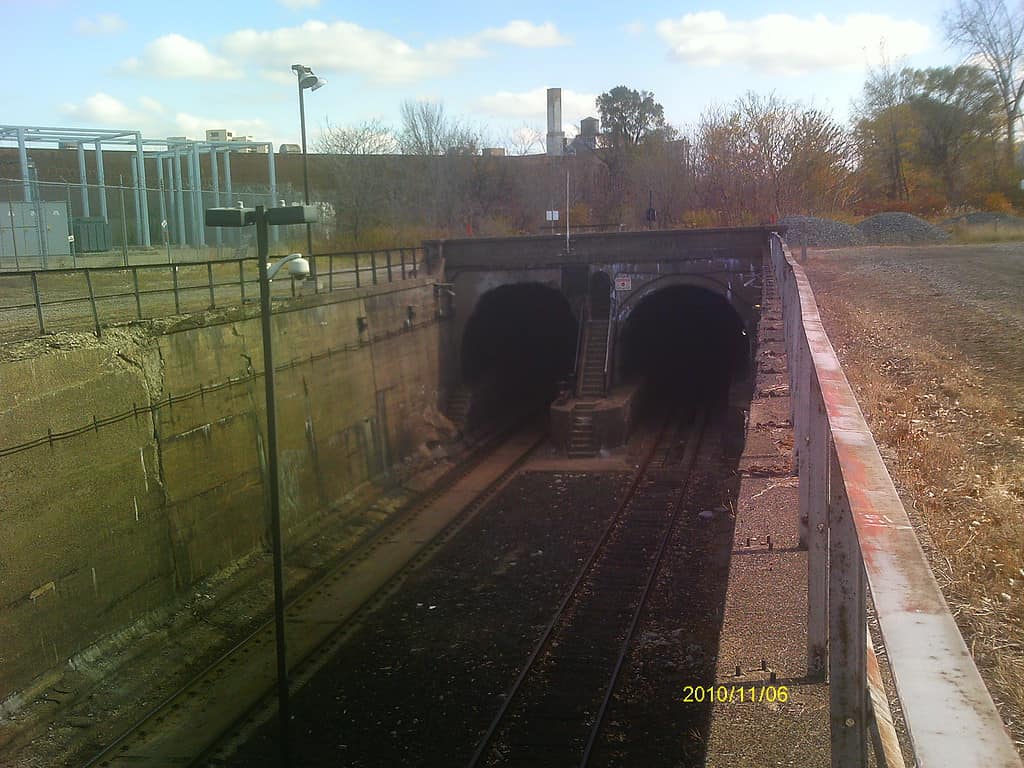
Michigan Central Railway Tunnel is the longest tunnel in Michigan and still in use today.
©MJCdetroit / CC BY-SA 3.0, via Wikimedia Commons – License
Where Is Michigan’s Longest Tunnel Located on a Map?
The Michigan Central Railway Tunnel, the longest tunnel in Michigan, is a railway tunnel operated by the Canadian Pacific Railway. The U.S. entrance is south of Porter and Vermont Streets near Rosa Parks Boulevard in Detroit. The Canadian entrance is located south of Wyandotte Street West, between Cameron and Wellington avenues.
For a drive across the border, the Detroit-Windsor Tunnel can be entered by directions shown on the map below:
Wildlife Surrounding the Michigan Central Railway Tunnel
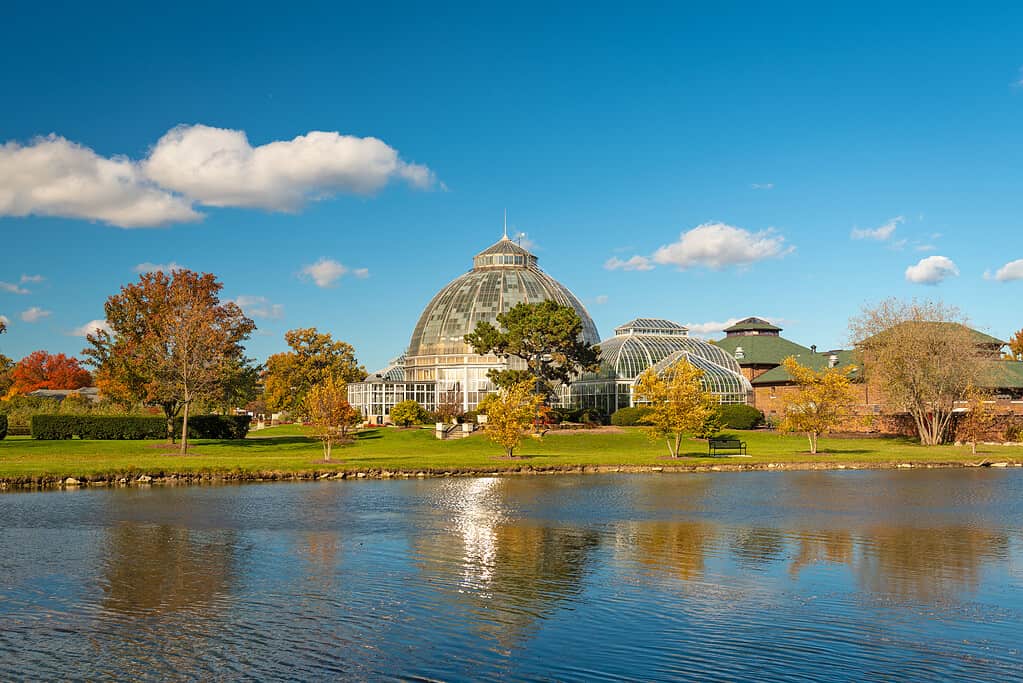
Belle Isle is a large island park in Detroit, Michigan that provides visitors a chance to appreciate urban wildlife.
©iStock.com/Sean Pavone
Detroit is a busy, developed city but that doesn’t mean it’s devoid of wildlife. In this city, Belle Isle attracts wildlife. It’s a large island park that mammals, reptiles, and birds call home. They have plenty of space here to roam about and nestle into. Locals have even spotted coyotes in the city. Locals and tourists are reminded that urban wildlife means all species live in harmony with one another. When wildlife is present, you can acknowledge it, but ultimately the goal is to let it live out its life on its own terms. Some of the animals you encounter may include pheasants, peregrine falcons, bald eagles, beavers, and mudpuppies!
Although some animals can feel like a nuisance (think raccoons and pigeons), you can always be proactive and ensure your personal space and property are clear of what attracts them, including garbage. When you leave garbage out to be picked up, make sure it has a lid and when fruit falls from trees, clear it so it doesn’t attract these animals. Although cats make wonderful pets, they can seriously harm bird populations, particularly during their migration periods. It’s best to keep cats indoors during this time to give the birds a better chance at survival.
The photo featured at the top of this post is © iStock.com/hxdyl
Thank you for reading! Have some feedback for us? Contact the AZ Animals editorial team.






